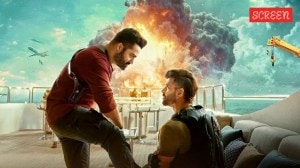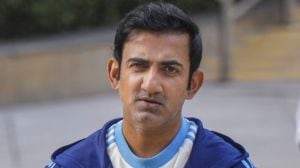Mumbai coastal road inaugurated today: All you need to know
The Mumbai coastal road offers seamless connectivity, reducing travel time from 45-50 minutes to less than 10 minutes between Marine Drive and Bandra-Worli Sea Link
 Mumbai coastal road was inaugurated on Monday morning (Express photo by Sankhadeep Banerjee)
Mumbai coastal road was inaugurated on Monday morning (Express photo by Sankhadeep Banerjee)The Mumbai Coastal Road Project (MCRP), officially called as the Dharmveer Swarajya Rakshak Chhatrapati Sambhaji Maharaj Coastal Road, was partially inaugurated Monday by Chief Minister Eknath Shinde along with Deputy Chief Ministers Devendra Fadnavis and Ajit Pawar.
The high speed corridor stretches for 10.58 km between Marine Drive and the Bandra-Worli Sea Link (BWSL). After Monday’s inauguration, a 9.5 km-long stretch would be made operational.
The total cost of the project is Rs 13,983 crore.
Here’s all you need to know:
Key aspects of the Mumbai Coastal Road
Total number of vehicular lanes: 8 (4×4) lane
> Inside tunnel: 6 (3×3)
> Lanes to be operational in first phase: 4 (3 inside tunnel)
Length of Road opening in first phase: 9.5 km
Speed limit:
> Road 80 kmph
> Tunnels 60 kmph
> Interchanges 40 kmph
Width of vehicular carriageway: 17 metres
> 9.6 metres inside tunnels
Total reclamation of sea: 111 hectares (ha)
>Reclaimed portion reserved for green open space: 70 ha
Total number of vehicular interchanges: 3 (Amarsons, Haji Ali and Worli)
Bus bays: 10
Available underground car parking units: 4
> Vehicles Capacity of parking lots: 1,800
Number of pedestrian underpasses: 20
About the twin tunnels
Diameter: 12.19 metres
Length (each): 2.07 km
India’s first undersea tunnels
The tunnels are being bored by using India’s largest diameter Tunnel Boring Machine (TBM) — Mavala
First time in India, the Saccardo Ventilation System will be installed inside a tunnel
First time in India, the bridge (Worli to Bandra-Worli Sea Link) is being constructed in the sea using monopiles
Advantages of the project
Seamless Connectivity — travel time reduces from 45-50 minutes to less than 10 minutes.
Fuel saving upto 34 per cent, leading to reduced carbon footprint of approximately 1,826 tonnes per annum.
Reduction of noise and air pollution
Dedicated bus lanes to take load off of heavy traffic
Timeline of the project
June, 2011: A technical committee was constituted by the government of Maharashtra for feasibility study.
December, 2011: The committee submits its report proposing construction of a 35.6-km high-speed corridor on reclaimed land that will connect the Marine Drive in the island city with Kandivali in the western suburbs.
April, 2013: The Maharashtra Coastal Zone Management Authority (MCZMA) urges the Union ministry to amend the Coastal Regulation Zone (CRZ) in India and allow reclamation of the Arabian Sea for constructing the Coastal Road.
June, 2015: The MCRP receives environmental clearance from the Ministry of Environment Forest and Climate Change (MOEFCC) for reclamation.
November, 2016: Survey for soil and sea-bed was undertaken
May, 2017: Project received final clearance from MOEFCC.
December, 2018: Foundation stone was laid at Amarsons Garden in Cumballa Hill.
March 11, 2024: First phase of south-bound arm (Worli to Marine Drive) opens for vehicular movement.
May, 2024: Entire stretch to become operational (tentative)







